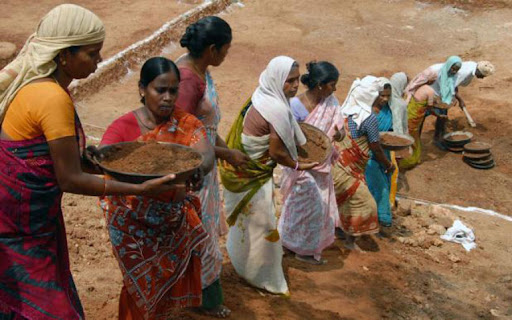The Mahatma Gandhi National Rural Employment Guarantee Act (MGNREGA), often referred to as NREGA, is a landmark legislation in India aimed at enhancing the livelihood security of people in rural areas. Enacted in August 2005, this social security measure provides at least 100 days of wage employment in a financial year to every rural household that volunteers to do unskilled manual work. This act not only ensures the right to work but also strives to ensure sustainable and inclusive growth in rural India.
Understanding NREGA
NREGA represents a significant advancement in the rural employment sector. The primary objective of the act is to guarantee rural employment by providing at least 100 days of wage-employment in a financial year to a rural household. Additionally, it aims to create durable assets and strengthen the livelihood resource base of the rural poor.
NREGA Job Card
A crucial component of this act is the NREGA job card. The job card is issued to eligible rural households, enabling them to apply for work under the NREGA scheme. The issuance of job cards and the record of employment provided in such cards ensure transparency and accountability in the implementation of the scheme.
The process to obtain an NREGA job card is straightforward. Interested households must submit an application to their Gram Panchayat. The application includes details such as the names, age, and address of the adult members of the household. Post-verification, a job card is issued within 15 days from the date of application. The job card serves not just as an identity proof but also a vital tool to claim employment under NREGA.
Financial Aspects and Calculations
The financial implications of NREGA have significant bearings on the rural economy. For instance, in Financial Year 2020-2021, the budget allocation for NREGA was approximately ₹1.15 lakh crore. This figure includes wages for the laborers and costs related to materials and administrative expenses.
The wage rate under NREGA varies from state to state, depending on the minimum wages fixed by the respective states. However, on an average, the wage rate is around ₹200 per day. Given the provision of 100 days of work, a rural household can earn up to ₹20,000 in a year under this act.
Impact on Rural Economy and Infrastructure
The impact of NREGA on rural India extends beyond just providing employment. It includes significant contributions to the creation and maintenance of rural infrastructure. Works undertaken under NREGA include the construction of roads, irrigation channels, and other public utilities which play a crucial role in improving rural connectivity and infrastructure.
Furthermore, NREGA promotes social equity by ensuring that marginalized communities, including women, Scheduled Castes (SC), and Scheduled Tribes (ST), are incorporated into the workforce. According to government statistics, women constitute a substantial portion of the workforce under NREGA, often hitting the mandated minimum of 33%.
Challenges and Criticism
Despite its numerous benefits, NREGA is not without challenges. Delays in wage payments, corruption, and the inadequacy of funds are some persistent issues that mar its implementation. Delays in wage payments can negate the benefits of guaranteed employment, leaving laborers in financial distress.
Additionally, the lack of adequate and timely fund allocation can halt the ongoing projects, leading to underutilization of the workforce and incomplete infrastructure projects. Administrative inefficiencies and leakages have also been pointed out in various audits and evaluations conducted over the years.
Conclusion
NREGA, with its focus on guaranteeing employment and building rural assets, is a crucial intervention for rural development in India. Its role in providing employment, ensuring livelihood security, and contributing to rural infrastructure is well recognized. However, addressing the implementation challenges such as timely wage payment, adequate funding, and administrative efficiency remains key for realizing its full potential.
Summary:
The Mahatma Gandhi National Rural Employment Guarantee Act (NREGA) plays a pivotal role in the rural employment landscape of India. Enacted in 2005, the act promises at least 100 days of wage employment per year to every rural household willing to engage in unskilled manual work.
NREGA job card are crucial as they enable rural households to claim employment. Financially, NREGA provides significant support, with households having the potential to earn up to ₹20,000 annually, calculated at an average wage rate of ₹200 per day for 100 days of work. The scheme is instrumental in enhancing rural infrastructure, promoting social equity, and creating sustainable livelihood resources.
Despite its benefits, NREGA faces challenges such as delayed wage payments, corruption, funding inadequacies, and administrative inefficiencies. Addressing these issues is vital to optimize the scheme’s impact and ensure consistent development in rural India.
Disclaimer:
The information provided in this article is intended for educational purposes only. Investors and stakeholders should consider all potential risks and rewards and are advised to seek professional guidance before making any financial decisions related to NREGA or any other investment in the Indian financial market.



